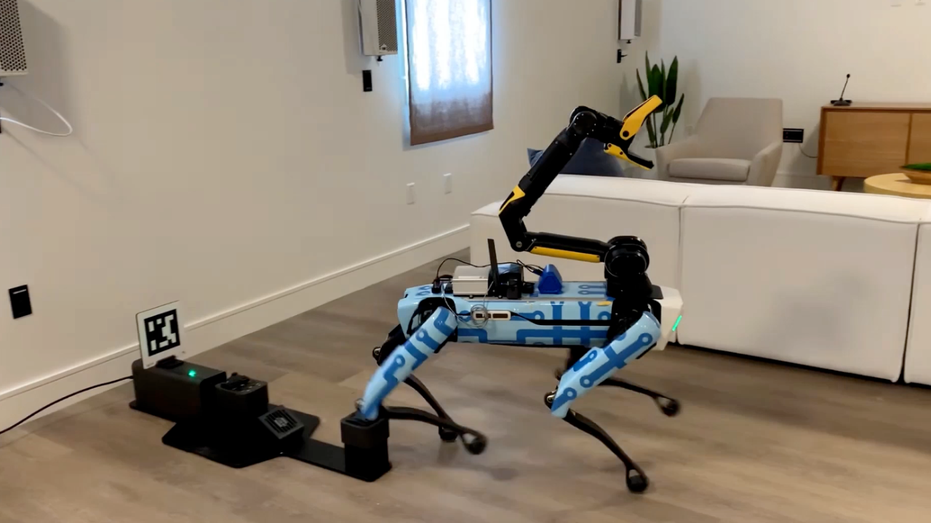The landscape of artificial intelligence is constantly evolving, and Facebook, now Meta, is pushing boundaries with its ambitious new project focused on ’embodied A.I.’. This initiative delves into the fascinating realm of creating robots that can learn and interact with the world in a more human-like way. Rather than simply processing data, these robots are designed to physically engage with their surroundings, learning from experience and adapting to new situations through trial and error. Facebook envisions a future where embodied A.I. systems can assist with everyday tasks, solve complex problems, and ultimately, improve our lives in unprecedented ways, marking a significant departure from traditional AI models.
Understanding Embodied A.I.
Embodied A.I. represents a paradigm shift in the field of artificial intelligence. It moves beyond the purely virtual and theoretical, grounding AI agents in the physical world. These agents, typically robots, are equipped with sensors, actuators, and sophisticated algorithms that allow them to perceive, interact with, and learn from their environment.
Key Characteristics of Embodied A.I.
- Physical Presence: Unlike traditional AI, embodied AI has a physical body.
- Sensory Input: Relies on sensors (cameras, microphones, etc.) to gather information.
- Interactive Learning: Learns through interaction with the environment.
- Adaptive Behavior: Can adjust its behavior based on experience.
Facebook’s Approach to Embodied A.I.
Meta’s approach to embodied A.I. is focused on developing robots that can learn and adapt in unstructured environments. This includes training robots to perform tasks such as navigating a home, picking up objects, and even understanding social cues. The ultimate goal is to create robots that can seamlessly integrate into our lives and assist us with a wide range of tasks.
This endeavor requires overcoming significant challenges, including developing robust perception systems, creating efficient learning algorithms, and ensuring the safety and reliability of these autonomous robots. These issues are some of the biggest hurdles in robotics currently, and this Facebook project could potentially solve them.
Potential Applications and Impact
The potential applications of embodied A.I. are vast and far-reaching. Imagine robots that can assist the elderly with daily tasks, perform dangerous jobs in hazardous environments, or even help us explore new worlds. Here’s a glimpse into some of the possibilities:
- Healthcare: Assisting doctors and nurses, providing care for patients.
- Manufacturing: Automating tasks, improving efficiency.
- Exploration: Exploring dangerous or inaccessible environments.
- Home Automation: Assisting with household chores, providing companionship.
Challenges and Ethical Considerations
While the potential benefits of embodied A.I. are immense, it’s crucial to acknowledge the challenges and ethical considerations that come with this technology. Ensuring the safety of these robots, addressing potential job displacement, and safeguarding against misuse are paramount. Furthermore, questions about data privacy and the potential for bias in AI algorithms must be carefully considered as this technology develops. This is an area ripe with potential pitfalls.
Ultimately, the success of Facebook’s project, and the future of embodied A.I. as a whole, will depend on our ability to address these challenges and ensure that this technology is used responsibly and ethically. Embodied A.I. has the potential to revolutionize many aspects of our lives, shaping a new era of human-robot interaction.
The Road Ahead: Collaboration and Open Innovation
The development of truly effective embodied A.I. systems will not occur in isolation. It necessitates collaboration between researchers, engineers, ethicists, and policymakers. Open innovation, where knowledge and resources are shared across institutions and disciplines, will be crucial for accelerating progress and ensuring that these technologies benefit society as a whole. This collaborative environment fosters a more comprehensive understanding of the complexities involved, leading to more robust and ethically sound solutions.
The Role of Academia and Industry
Universities and research institutions play a vital role in conducting fundamental research and developing novel algorithms and hardware components. Meanwhile, industry provides the resources and infrastructure necessary to translate these discoveries into practical applications. Meta’s project, with its significant investment in research and development, serves as a prime example of industry’s commitment to pushing the boundaries of what’s possible. The convergence of academic expertise and industrial resources is a powerful force for innovation.
Addressing Societal Concerns: Transparency and Accountability
Building trust in embodied A.I. requires transparency and accountability. The algorithms that govern these robots’ behavior should be understandable and explainable, allowing us to trace their decision-making processes. This transparency is essential for identifying and mitigating potential biases, ensuring fairness and equity in their application. Furthermore, mechanisms for holding developers and operators accountable for the actions of their robots are crucial for preventing misuse and ensuring responsible deployment. This also means having the ability to understand why a robot made a specific decision in a given situation. If the AI is a “black box,” it will be difficult to trust.
The Long-Term Vision: A Symbiotic Relationship
The ultimate goal of embodied A.I. is not to replace humans, but to augment our capabilities and create a symbiotic relationship where humans and robots work together to solve complex problems and improve our quality of life. This vision requires careful consideration of the ethical and societal implications of this technology, ensuring that it is used to empower individuals and communities, rather than exacerbate existing inequalities. The future we build with embodied A.I. should be one where technology serves humanity, enabling us to achieve our full potential.

